Wild hogs go by many names: feral swine, Russian boars, pineywoods rooters, Eurasian pigs, and razorbacks, just to name a few. By any name, the sentiment toward them is the same. They are a nuisance and destructive, so wildlife biologists and hunters have been trying, in their own ways, to control, manage, or eradicate them.
If you are considering a wild hog hunt, first, get to know the species. We explain why they’re here and touch on the havoc they cause. Then, we offer tips for you to consider if a wild hog hunt is in your future.
Wild Hogs: Invasive Species in America
The first pigs to set hoof in the United States were brought over by European settlers in the 1500s. While domesticated pigs were aboard the ships sailed by Christopher Columbus in the late 1400s, Spanish explorer Hernando DeSoto introduced them in Florida when he landed there in May 1539.
A secondary introduction of hogs, this time the wild Russian boar, also known as the Eurasian boar, happened in 1912. These giant hogs were released in Hooper Bald, North Carolina, for sport hunting; not long after, populations of these boars were transported to other states, including California, Mississippi, Tennessee, Georgia, South Carolina, West Virginia, and Florida.
Some of these boars escaped their fenced game preserves and interbred with both feral and domesticated pigs, leading to rampant population growth. Wild pigs have now been reported in at least 45 states, with populations as far north as Michigan, North Dakota, and Oregon. The hogs’ range expansion over the last 20 years is mostly a result of illegal translocation by humans.
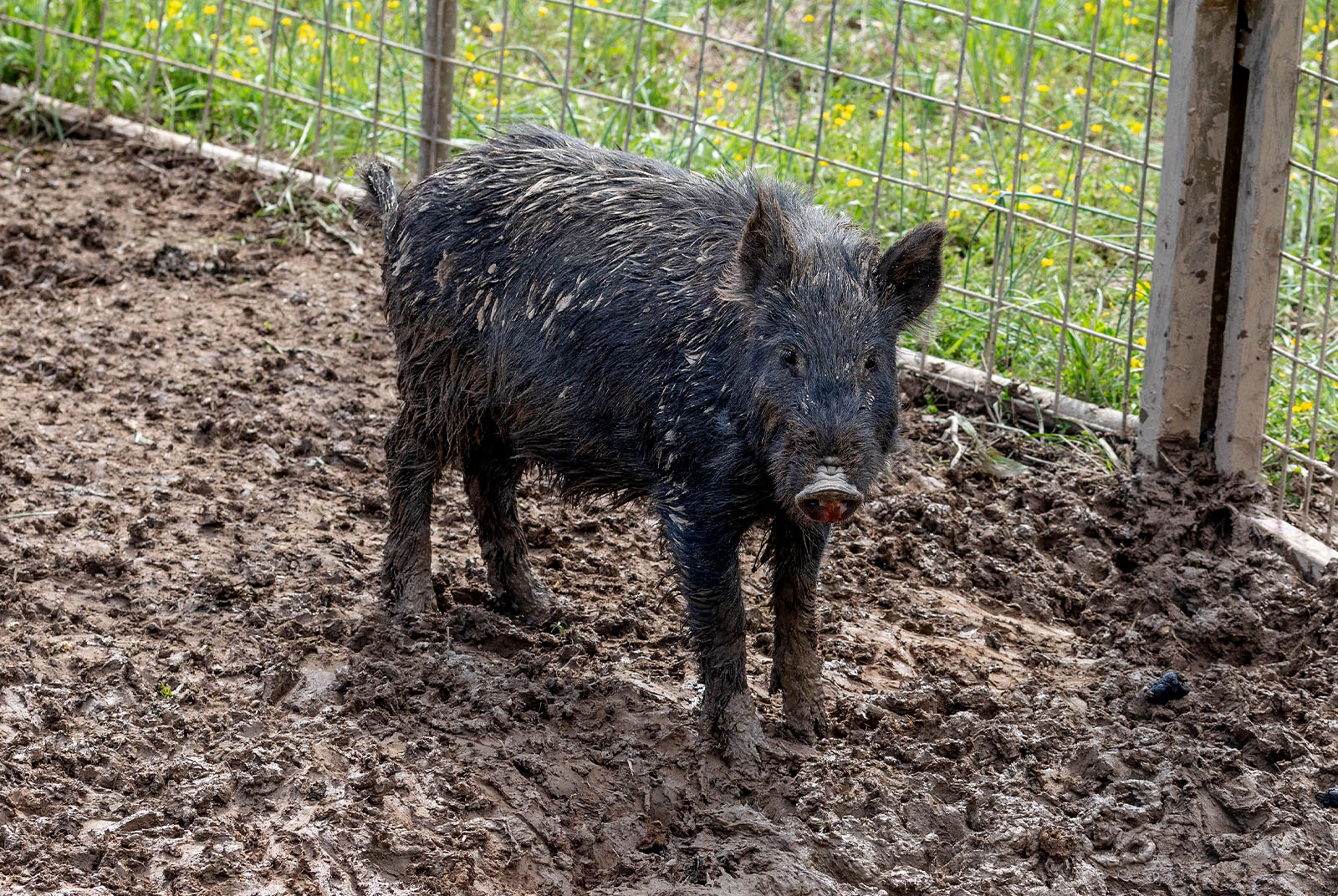
The nation’s population of five million feral hogs averages $300 in damage per individual pig, bringing the total annual damage to $1.5 billion.
Why Are Feral Hogs Considered a Nuisance?
“They are an eating, reproducing machine,” says Martin Coker, Nuisance Species Program Biologist for the Mississippi Department of Wildlife, Fisheries, and Parks. “Usually they don’t have direct competition, and there’s not a lot of natural predators of the wild hog so they have been able to flourish and proliferate at an amazing rate.”
Groups of hogs are called “sounders,” and these sounders destroy landscapes. A federal report published in 2020 states that the nation’s population of five million feral hogs averages $300 in damage per individual pig, bringing the total annual damage to $1.5 billion. This number factors in environmental damage, soil erosion, and agriculture losses.
In 2024, though, it was reported that the three million feral hogs in the state of Texas cause $500 million in property and crop damage every year. It’s no wonder hog hunting in Texas is a thing. Some Texas counties even offer a bounty of $5 to $15 per tail or ears of a dead hog.
“They’ll eat anything. They’re very opportunistic,” says Coker. Wild hogs are omnivores; they’ll eat plants, animals, and just about anything above or below the ground. They’re known to decimate sensitive native plants as well as industrial crops. They root, wallow, and eat so what’s left of the land is highly susceptible to soil erosion and invasive weeds.
“Any meal is a good meal for a pig,” says Coker.
Wild hogs have also been known to carry at least 30 diseases and nearly 40 types of parasites that can affect people, pets, livestock, and wildlife. Some diseases, like pseudorabies, are fatal to cats and dogs if they are exposed to direct contact with a feral pig carcass.
There are diseases that affect pig populations, like brucellosis, that cause spontaneous abortions in pigs, but nothing that truly puts pigs at risk.
“Even when they have outbreaks,” says Coker, “there’s more than enough to keep the population moving forward.”
Feral pigs have shown they can harm wildlife in other ways than exposure to disease. Coker mentions there is ongoing research into how wild hogs might be linked to nest predation and brood interference, especially for turkey and quail populations.
Feral hogs can multiply faster than any other large mammal.
“They push other animals out,” says Coker. “If you get into direct competition between pigs and deer, the deer will move off. The deer don’t like to share spaces, especially around feeders.”
Wild hogs, as pointed out by Coker, reproduce frequently. Feral hogs can multiply faster than any other large mammal; females begin breeding at about eight months and can produce two litters of four to 12 piglets every 12 to 15 months, with four to six of those piglets surviving into adulthood.
“The population can basically double every year,” says Coker.
Where Do Feral Hogs Live?
With rampant population growth and illegal human translocation activities, feral hogs are having a heyday. There’s hardly an environment in which a hog can’t thrive: forests, grasslands, wetlands, swamps, savannas, and shrublands. They’re all places where pigs can root and roam.
Although southern states (including Texas) are home to the largest populations of pigs, and 90 percent of the counties in those states have reported sightings of wild pigs, there are populations as far west as California, Oregon, and Hawaii.
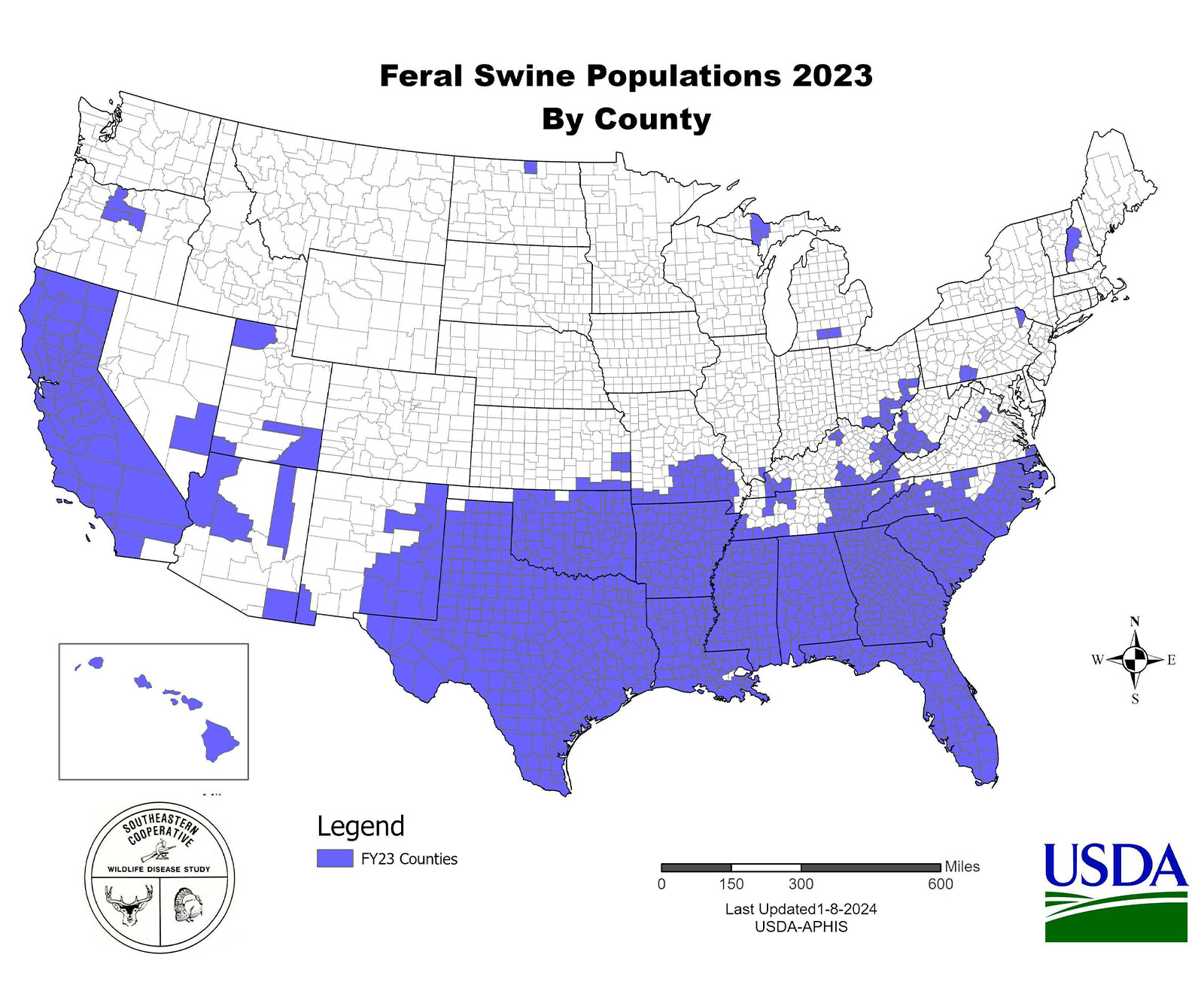
Wild pigs have now been reported in at least 45 states, with populations as far north as Michigan, North Dakota, and Oregon.
The Wild Hog Hunting Landscape
“Though wild hogs have a high death rate with their young,” says Coker, “they have very few animal predators. Basically, humans are the most effective predator of the adults.”
With humans being the top predator when it comes to feral pigs, there are two ways feral pigs are dealt with by said humans: through large-scale trapping efforts aimed at removing entire sounders and through managed hunting practices. Sometimes those two methods don’t see eye to eye, or want the same outcome.
The delicate line in the sand that outlines wild hog hunting is having one side (typically the agencies that deal with nuisance animals) looking to eradicate any and all wild hogs, and the other side (primarily hunters) who would like to see wild hog populations managed in a way that would allow them to keep hunting them. See where this can be misaligned at times?
Another nuance to this nuisance animal? Unlike deer, turkey, and other game animals, wild hogs are not game. They are considered an invasive, non-game species in most states, which means an open season with no bag limits. Essentially, in most places hunters and landowners can take as many wild hogs as they want 365 days a year.
Even with unlimited hunting, hunters are only able to remove up to 40% of a population each year.
And yet the sounders thrive. There is a good read on the topic of controlling wild hogs in Petersen’s Hunting. It says, just as professional wildlife biologists state, that hunting is not a way to control populations. Many hunters target large male hogs, leaving the females, which has the least impact on controlling a population.
An Oregon Department of Fish and Wildlife fact sheet outlines the stark ineffectiveness of hunting, stating, “It would take a 70% harvest rate each year just to maintain the population at its current level. Hunting is often used as a management tool but studies have found that even with unlimited hunting, hunters are only able to remove up to 40% of a population each year.”
Even in Texas, the biggest hog hunting year it had was only a few years ago and the total number of feral hogs harvested by both private landowners and recreational hunters topped out at 51,000 pigs. The average in a year is only about 40,000, or 1.3% of the total population.
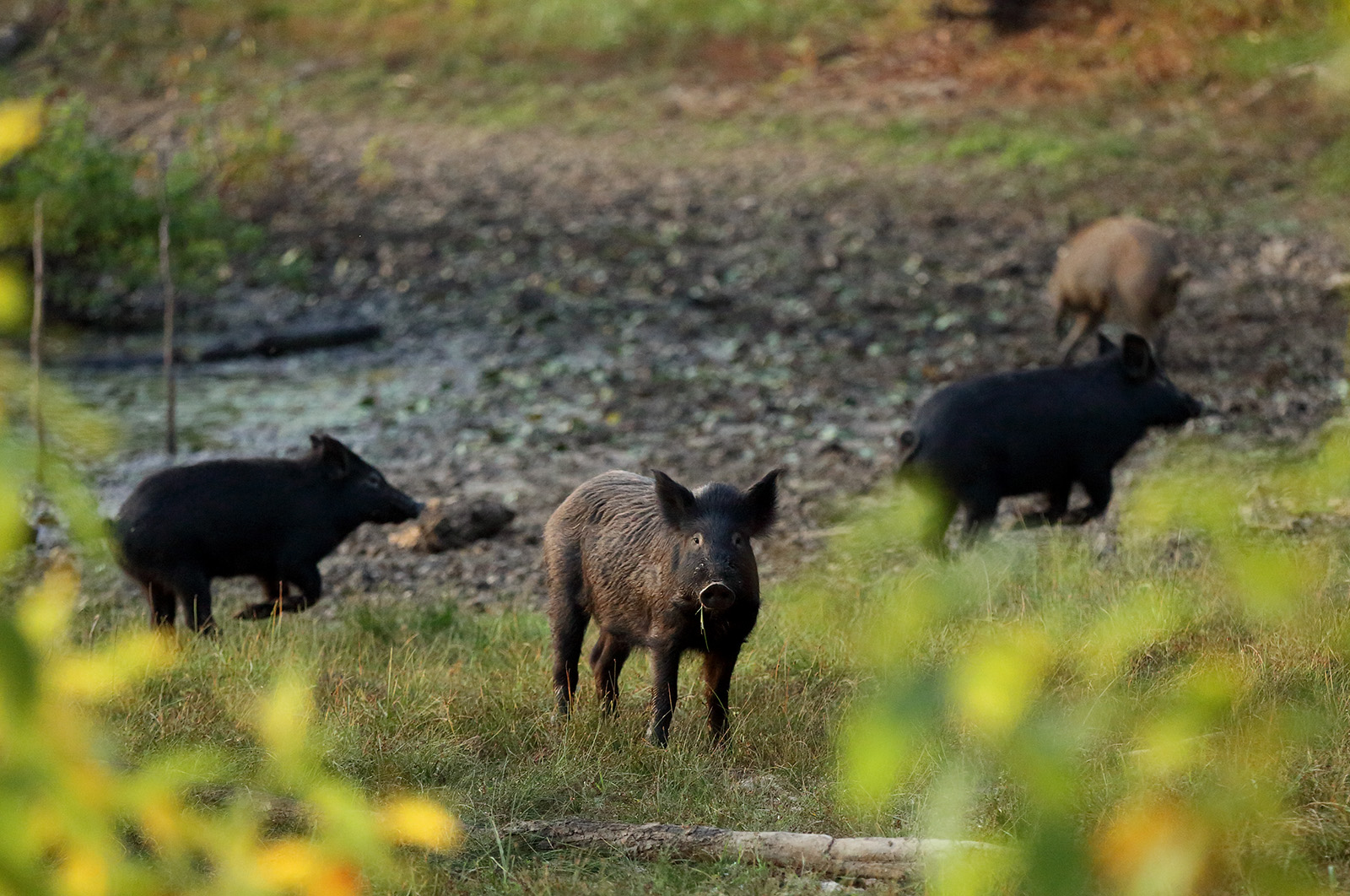
Unlike deer, turkey, and other game animals, wild hogs are not game. They are considered an invasive, non-game species in most states, which means an open season with no bag limits.
How To Hunt Wild Hogs
Perhaps as a hunter, you want to do your part, either as a form of recreation or to help a nearby landowner get rid of a small sounder. Maybe you run across some hogs while pursuing other species. In fact, in Mississippi where Coker resides, and in neighboring Louisiana, hunters are taking more wild hogs than they are deer in a year.
Whatever your reasons for planning a wild hog hunt, here’s some of what you can expect.
Pick a Style of Hunt and Check the Regs
For recreational hunting, you generally have your choice between paid guided hog hunts or DIY public land hunts. Texas, for example, allows hunters to harvest wild pigs on public lands with a valid hunting license, though a 2019 law states a hunting license is no longer required when on private land.
When hog hunting is portrayed on TV or YouTube, it often shows nighttime hunts using thermal imaging equipment. Not all states allow hunting at night, but some do. Most nighttime hunting for wild hogs is limited to private properties. In other places, you might find it’s legal to shoot from helicopters, run dogs, or hunt from horseback. Point being, if you have a dream set up for your hog hunt, be sure to do your research in advance to make sure it aligns with your destination’s regs.
Hogman Outdoors is an excellent resource on hog hunting regulations throughout the United States, discussing night hunting, bag limits (if any), license requirements, and baiting. As always, cross-check resources with the appropriate state agency.
Wild Hog Hunting Considerations
If you have permission to hunt on private land, book with a guide, or want a DIY hunt, there are a few things to keep in mind:
- They’re Hard To Outsmart: Pigs are the fourth smartest animal on the planet behind dolphins, chimpanzees, and elephants. Some pigs have been trained to operate a joystick and play a video game, and they learned to do this faster than a three-year-old human could. So pigs will learn from failed attempts at trapping or hunting. They will—and do—adapt.
- Their Nose Knows: They have an incredible sense of smell. They have about 25 percent more olfactory receptor genes than dogs and can detect odors five miles away and several feet underground.
- They Have Tough Skin: Mature male feral pigs, which can weigh up to 600 pounds and measure seven feet long, have “shoulder shields,” a thickened subcutaneous layer of tissue that protects them from other males’ tusks (which can extend five inches) fighting for breeding opportunities. Their hardy anatomy becomes a factor in everything from choosing the right firearm to understanding the demands of processing a difficult carcass.
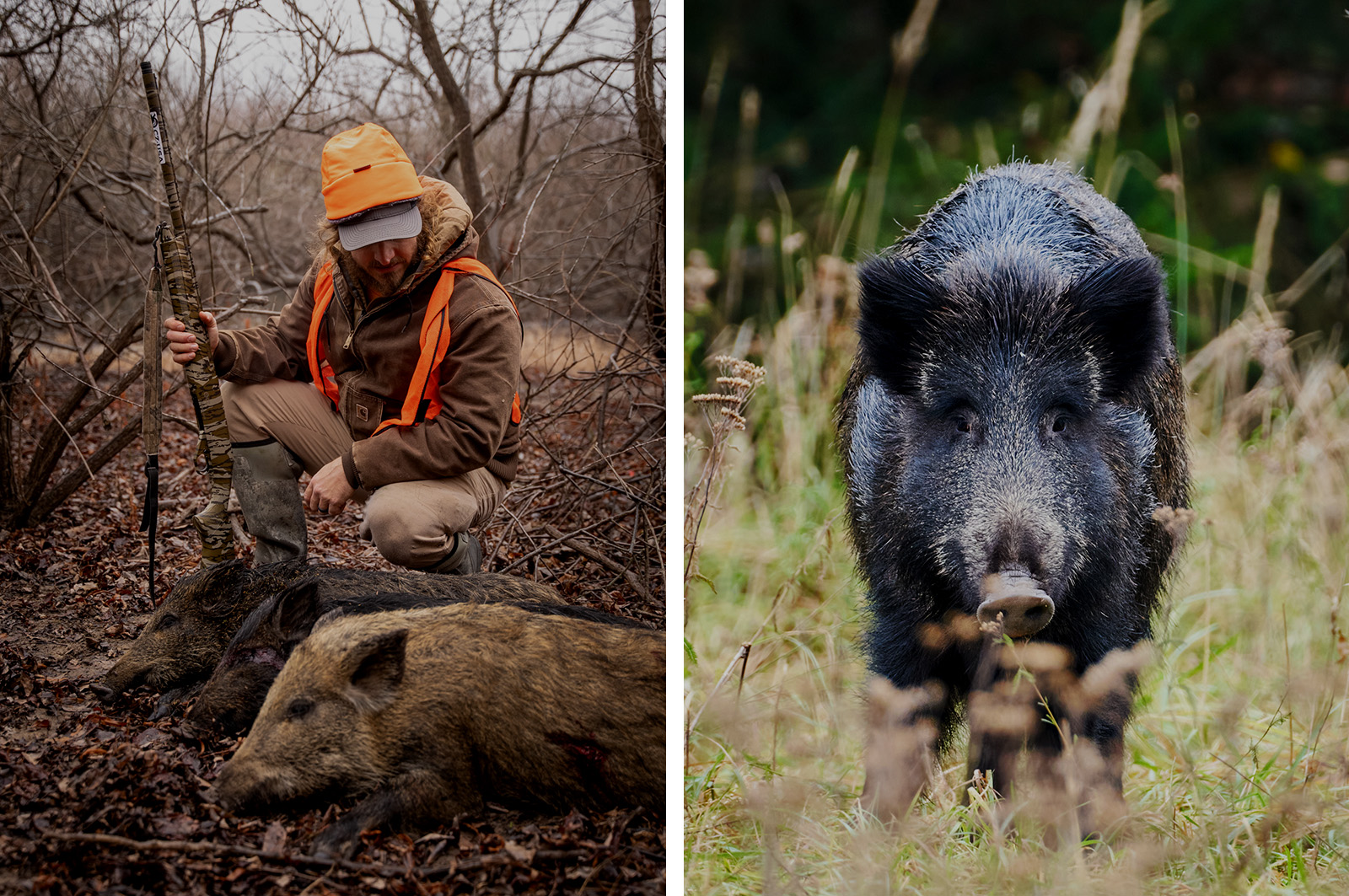
Feral pigs have about 25 percent more olfactory receptor genes than dogs and can detect odors five miles away and several feet underground.
Equipment-wise, you can go as basic as you like or as high-tech as your budget will allow. Wild hogs have been harvested with calibers as small as a .22LR to as large as a .50 BMG for a machine gun. MeatEater published an article in 2023 discussing the best rounds for boars. (Hint: maybe you do need that 6.5 Creedmoor.)
“You could use a .22 if the pig were in a pen or a trap,” says Coker, “but when you get to the .300 Blackout and the 6.5s, those lower velocity but high-grain bullets, work magic on them, especially up to 200 yards. I’ve shot a wild pig broadside at 35 yards with a 6mm Remington and 95-grain bullet. I hit it, it went down on one knee, and then got back up. They’re pretty robust animals.”
onX Features for Hog Hunts
Like most other big game hunts, you’ll want to find signs that the animals are in the area. With wild hogs, you’ll likely find them by the destruction they leave behind. Smaller sounders, however, could be harder to detect.
Look for water sources, feeders, and food plots and mark them with Waypoints. Feral pigs feed at dawn and dusk and can be sensitive to weather changes in the same ways as deer, so getting familiar with the Hunt App’s suite of Weather tools will be an asset.
And don’t forget about a pig’s ability to smell—Wind on a Waypoint can help you find the right approach to your next side of bacon.
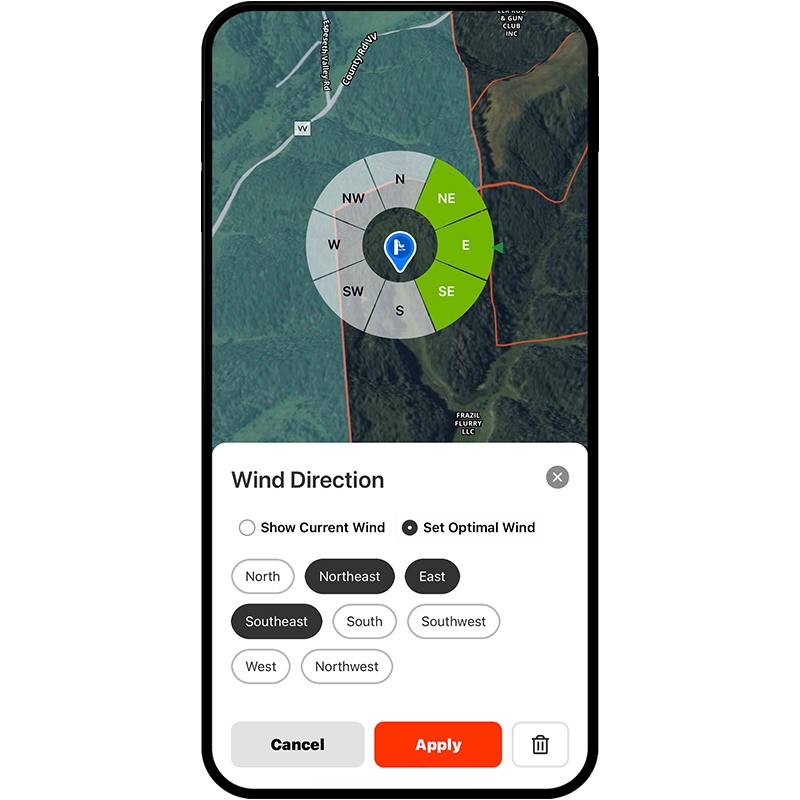
Good luck, and let us know how you’ve been successful in the field.